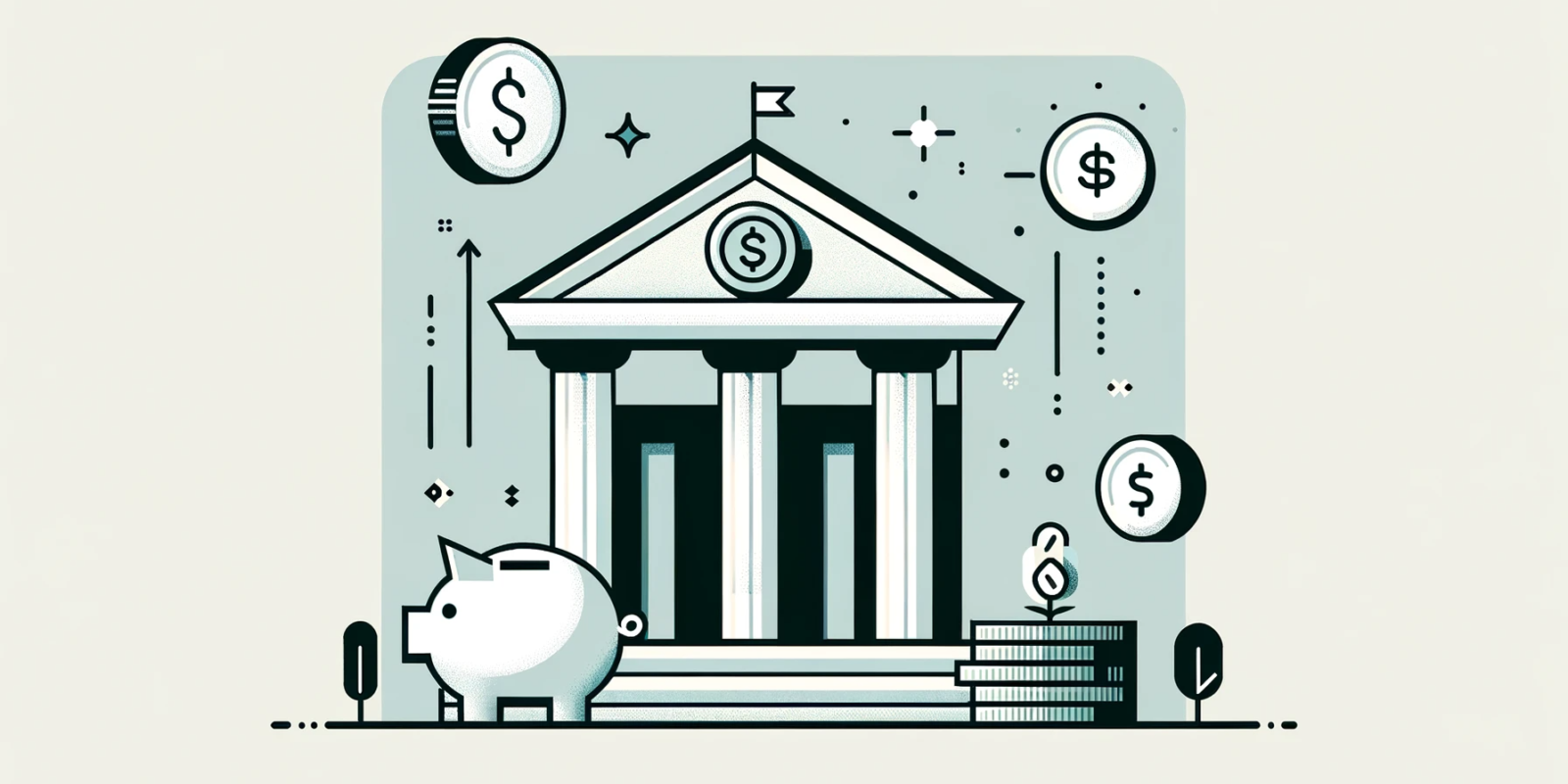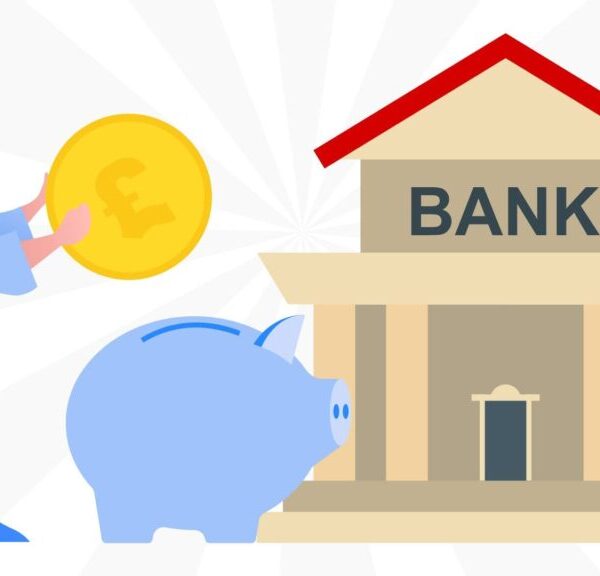A bank should suit your finances. Finding the correct bank to fit your demands, whether it’s higher savings rates or a vast ATM network, is crucial.
Steps to help you choose bank for saving
1. Find the proper account
Comparing all of a bank’s goods and services might be daunting. Start by aligning your accounts with your financial objectives and priorities.
The most prevalent accounts:
- Checking accounts
- Savings accounts
- Money market accounts
- Deposit certificates
If you need a new checking account, choose a larger, conventional bank with many options. Some credit unions and internet banks offer high-yield checking accounts.
For the highest return, create a high-yield savings account. Online banks pay greater rates than traditional banks. The average savings account APY is 0.25 percent, yet elite institutions offer roughly 5 percent. If they’re insured by the FDIC or NCUA, online banks are safe like regular banks.
Money market accounts are like savings accounts but may allow checkwriting. Many banks offered debit or ATM cards with monthly transaction limits. Finding a bank with a minimum amount you can meet is important since these accounts may offer high APYs.
CDs give additional interest. When you invest money in a CD for a few months to many years, you’ll get a guaranteed return. Before the CD matures, you may have to pay fees or give up interest or principal. Rates and periods vary every bank, so assess your financial objectives and if the CDs provided meet your requirements.
You may also want a bank that provides mortgages, personal loans, and debit and credit cards.
2. Choose banks with minimal or no fees.
Avoidable costs are unnecessary when several institutions offer low or no fees.
Low costs characterize online banking. They charge less than brick-and-mortar banks since they have fewer branches and cheaper operational expenses. Some online bank cardholders may withdraw money for free at ATMs.
Pay attention to ATM, overdraft, and monthly maintenance costs. Bankrate found the average overdraft cost is $29.80. It may be costly to enroll in an overdraft protection program, which covers unaffordable purchases.
Larger banks like Citibank and Bank of America are eliminating or reducing overdraft fees. Consider if the banks you’re evaluating have adopted more forgiving overdraft rules to follow this trend.
To prevent costs, follow these procedures after choosing the right account:
- If you overdraw a checking account, your bank will deduct money from another account. This service may cost, but it’s usually less than an overdraft.
- Register for low balance notifications on your bank or credit union’s website or app. You may get SMS notifications when you risk overdrawing your account.
- Find out how to avoid monthly maintenance fees. To waive fees, banks may demand a minimum daily balance or direct transfers.
3. Consider local branch convenience.
Banking accessibility is also important.
Paul McAdam, J.D. Power senior director of regional banking, thinks ATM, branch, and online/mobile banking convenience are vital.
What conveniences you value depends on your habits. People who do most things online may prefer digital banking over branch locations. Those used to branch banking may disagree.
Most customers still use branches, with 78% opening their most recent account or product in person, according to J.D. Power. Its analysis also shows that handy branch offices are the top reason people choose their major banking institutions.
Even if you do most things online, you may desire a bank with physical locations.
4. Examine credit unions
Many people know the largest banks, but credit unions are worth examining.
Credit unions are member-owned, non-profit. Members get profits via cheaper fees, greater savings rates, and lower borrowing rates.
Joining a credit union is easier now. Many are national and enable you to participate by joining an organization or donating to a charity.
5. Find a lifestyle-friendly bank.
Your bank should fulfill your requirements. As a self-employed person, you need a bank that can help you grow your company.
If you want to save more, choose a bank with features like:
- Savings accounts with high interest.
- A selection of CD terms to meet your objectives or create a ladder.
- Individual savings account opening and naming. You may have an emergency fund, trip fund, and gift fund savings accounts.
- Track expenses. Bank websites and apps include budgeting features to help you manage your spending and understand where your money is going.
6. Check digital characteristics
Most banks provide basic services like transferring cash, paying bills, checking balances, and mobile check deposits via app or website.
Consumers want services like locking a debit card to prevent a stranger from using it and managing mobile banking notifications, but not all banks provide them. Not all online banks have a smartphone app, so you may need to log in using a mobile browser. An sophisticated banking software can let you store and track your accounts.
7. Understand terms and conditions
The account agreement, which may not be on the account’s home page but is normally on the bank’s website, contains important account information. Reviewing the disclosure might help you spot hidden costs.
Your account agreement will explain how to waive monthly service costs. The fee declaration may indicate if the bank refunds out-of-network ATM fees.
Protect your funds with the National Credit Union Administration or Federal Deposit Insurance Corp. in case your bank fails.
When comparing items, check for expiring promotions. Some banks provide tempting teaser rates that drop to significantly lower rates.
8. Review prospective banks.
After comparing a few banks, reading expert evaluations might help you understand their customer service and goods. Since many customers stay with their banks, customer evaluations might be beneficial.
Management accounts with many banks or credit unions may be preferable if you can’t choose one.
FAQ Section
- How significant is an interest rate when picking a bank to deposit money with? When choosing a savings bank, interest rates are important since they dictate how much your money will increase in value over time. You get more money back from your savings when interest rates are higher. But it’s also critical to take into account other elements like bank fees, level of service, and account accessibility. A competitive interest rate must be balanced with these considerations.
- Which is better for savings—a regular bank or an internet one? This decision is based on personal taste. Because they have fewer overhead, online banks frequently offer cheaper fees and greater interest rates. Nonetheless, conventional banks offer physical facilities for transactions as well as in-person customer support. When choosing, take into account your familiarity with online banking and your requirement for traditional banking services.
- Can I open accounts for savings at other banks? It’s possible to have savings accounts with several different banks. This can help you take advantage of the numerous features, bonuses, and interest rates that different banks have to offer. To maximize each account’s benefits and prevent any expenses, managing several accounts necessitates maintaining organization.




